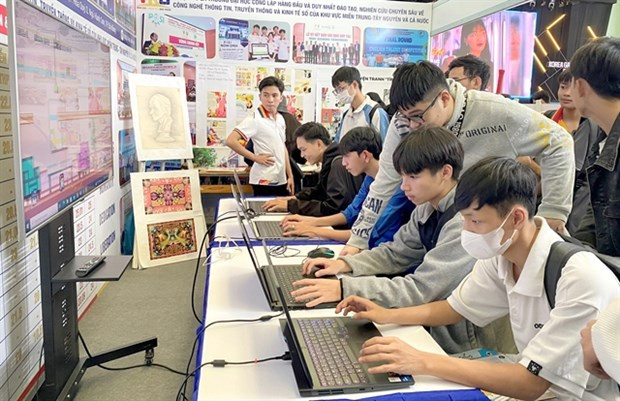
According to the Authority of Broadcasting and Electronic Information director general Le Quang Tu Do, the Ministry of Information and Communications (MIC) aims to increase the industry’s revenue to 1 billion USD in its 2022-27 game development strategy.
Key areas of focus in this plan include expanding the number of businesses in the industry and joint training programmes with educational institutions.
While game design courses have been offered at more than 100 colleges across the world, the major is relatively novel to most universities in Vietnam.
A majority of the Vietnamese gaming industry’s workforce was trained in information technology (IT), software development or graphic design.
|
In January this year, tech company Sconnect opened its Sconnect Academy of Media Arts (SAMA) which specialises in animation and game design.
Meanwhile, FPT Polytechnic College announced that its two-year game programming course will be open for enrollment starting this admission season.
The Posts and Telecommunications Institute of Technology (PTIT) is also offering an undergraduate degree in game design this September and is expected to receive 200 students in the first cohort.
Speaking to Kinh te Sai Gon (The Saigon Times) online newspaper, the institute director Dang Hoai Bac said educational games are a focus of this programme, which has been designed to keep up with market trends.
It will also provide training in creative thinking and knowledge so that students can enter the global gaming industry workforce.
PTIT is the second higher education institution in the country to offer an undergraduate degree in game design, the first being RMIT University Vietnam in 2022.
Designed based on a similar course offered at RMIT University in Australia, the programme follows a project-based approach to equip students with skills in various aspects of design and production, including digital project management, programming and scriptwriting.
A survey conducted by RMIT also showed Vietnam’s gaming industry is witnessing exponential growth, but significant investment in human resources is required for sustainable industry development.
According to the study, the industry in Vietnam reached 12 trillion VND (482 million USD) in revenue in 2020, more the twice the figure in 2015.
By number of downloads, Vietnam is among the top 10 game distributors in Southeast Asia, Australia and New Zealand, according to a report by the data platform App Annie.
Vietnam is also considered a major gaming centre in the region with approximately 430,000 game programmers working in local and multinational companies, but there are few designers.
Most of the studios in Vietnam are operating in a software outsourcing model, carrying out tasks related to graphic design, programming or cloning.
This approach brings back large profits in the short term but does not allow these companies to make a breakthrough in the global market. There is also a lack of designers capable of creating an entire game title on their own from start to finish.
According to an RMIT University Vietnam representative, many of the locally made games were created without innovative thinking, leading to lacklustre products.
Vietnam needs to invest and develop a game industry workforce that is capable of identifying and solving problems, elevating the sector to become a pillar of the future digital economy.
Training for designers must equip them with the necessary skills and ability to adapt to the ever-evolving technologies.
Sharing the same perspectives, director of Aptech Computer Education in Vietnam Chu Tuan Anh said that a thorough game design course must be based on three factors, which are insights into the Vietnamese and international market; industry experts among the teaching staff; and professional opportunities and support for students.
According to Nguyen Ngoc Bao, director general of VTC - a major game distributor in Vietnam, there is a large demand for human resources in the country’s IT sector, including the gaming industry.
Meanwhile, a gap remains between the capacity of programmers and industry demands, with only 30% of IT students meeting the skill requirements of companies, he added.
With more universities offering degree courses in this field, it is expect that the negative social prejudices on games will change and the workforce demand for the gaming industry will be met./.VNS